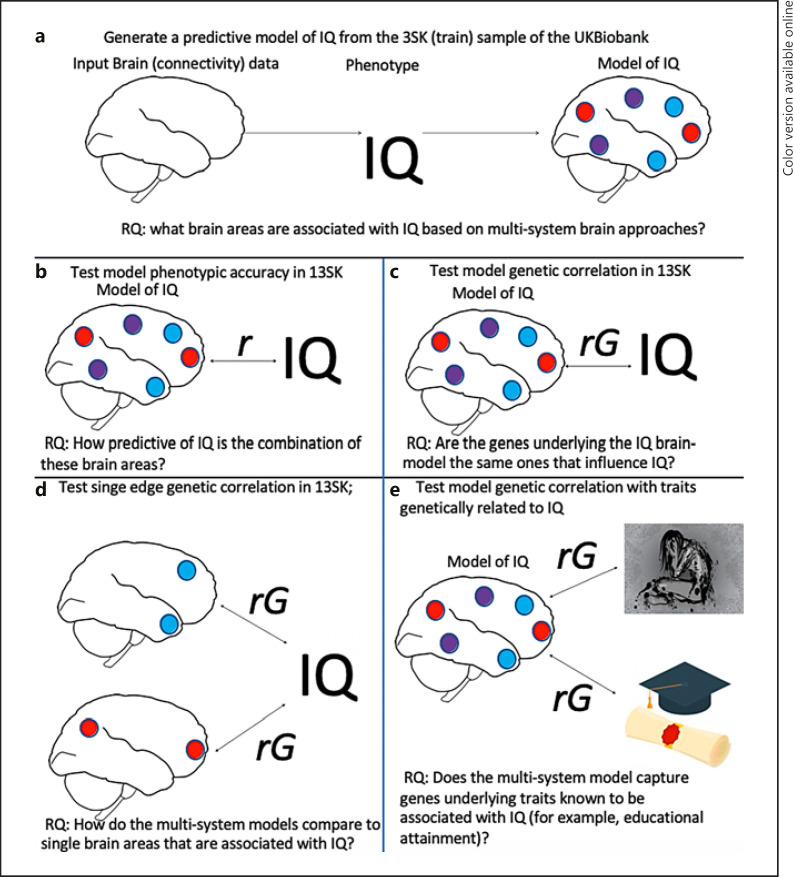Fig. 2.
Workflow for main analyses in this study. First, (a) we generated connectivity-based predictive models (CBPMs) of IQ in a sample of 3,000 individuals with brain data from the UK Biobank. Next, (b) we confirmed the out-of-sample predictive accuracy of these models phenotypically by relating brain-based predicted IQ from brain data with measured IQ in a genetic validation set of ∼13,000 individuals of European descent. Because the sample of 13,000 individuals also had genetic data, (c) we tested the genetic correlation between predicted IQ and measured IQ in this sample. Next, (d) we ran the genetic correlation between the strongest single edges and IQ and compared them (using the 95% confidence intervals) to genetic correlations from multisystem brain brain-based predicted IQ. Finally, (e) to confirm that these genetic correlations were capturing relevant theoretical aspects of IQ, we estimated the genetic correlation between brain-based predicted IQ and known genetic correlates of IQ.

